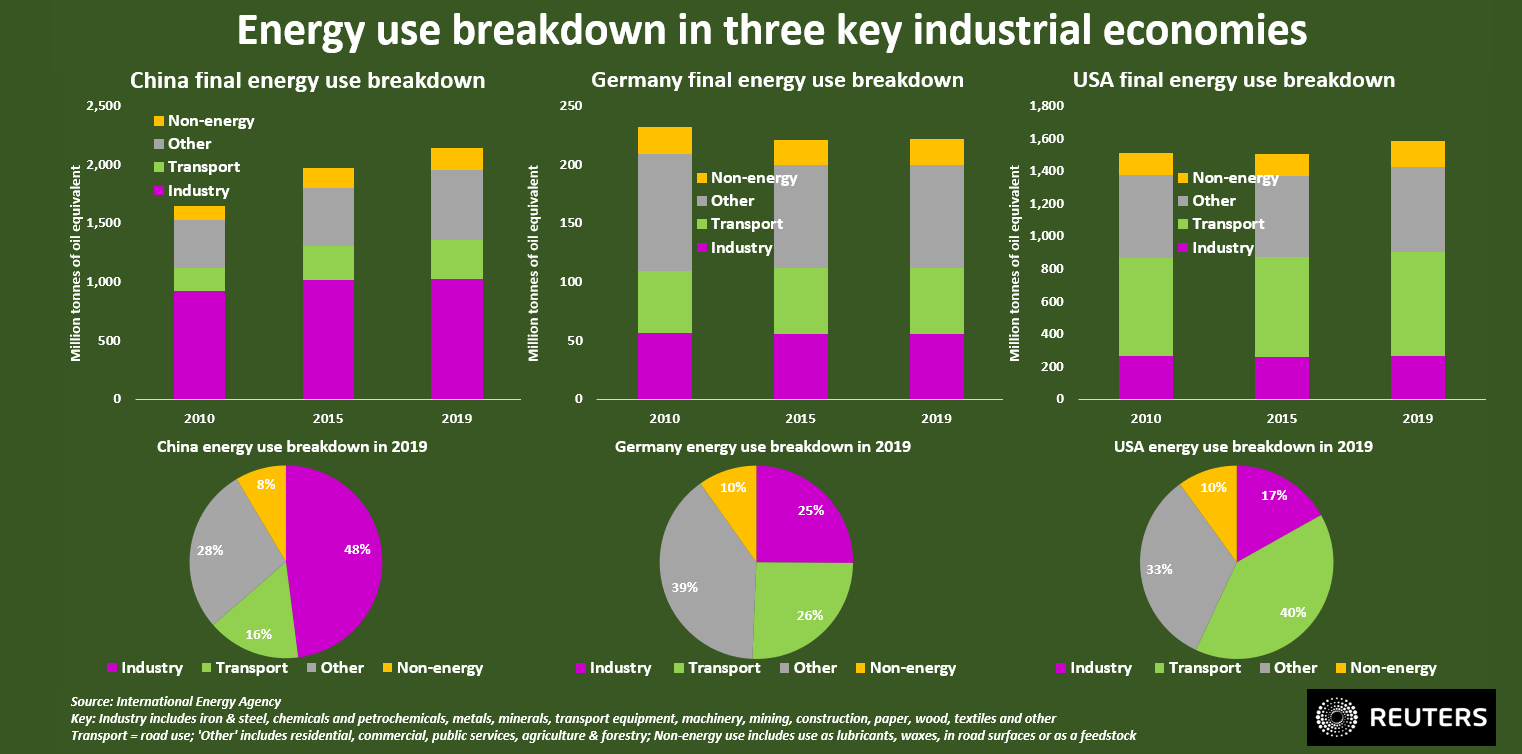LITTLETON, Colo., Oct. 13 (Reuters) – Much of the energy transition debate has focused on electrifying car fleets and using more renewable energy in power generation, regardless of how the leading energy industry will run. world economy, coal.
If rapid and sustainable reductions in fossil fuel emissions are to be achieved worldwide, such major sources of employment, tax revenues and national wealth must not only be at the forefront, but also play a major role in accelerating the transition. Low carbon economy. .
According to the International Energy Agency (IEA), industry accounts for 29% of global energy consumption and a quarter of emissions, which has significant potential for global energy transition efforts.
Join now for unlimited access to Reuters.com
But because of the marginal nature of manufacturing and producing energy-intensive intermediate goods such as cement, chemicals and metals, industry tends to resist changes that erode profits.
The picture is further complicated by the uneven rate of industrial development across countries and around the world, making it impossible to decide whether and when the industry as a whole will finally be ready for the fossil fuel transition.

But the three major industrial economies, China, Germany and the United States, are each undergoing dramatic energy-saving reforms that are reshaping their industrial scenarios and driving greater change around the world.
Coal factory floor
Any industry discussion should include China, the world's largest producer and exporter of goods.
It has representatives from all types of industries at all levels of complexity, from very large manufacturers, from machinery, metals and electronics to ceramics, batteries and toys.
Industry is the backbone of China's economy, accounting for about half of total energy consumption and about a quarter of employment, according to IEA and World Bank statistics.
Therefore, other countries looking to develop their manufacturing bases turn to China for guidance, especially on how to reduce energy consumption and emissions.
Coal remains China's main industrial energy source, accounting for 43% of the sector's total energy supply in 2019, according to IEA data.
That's down from more than 60% in 2010, but coal's share is expected to fall further as Beijing pursues aggressive pollution reduction measures.
A third of China's industry is off the grid, up from 22% in 2010, and rapid electrification of manufacturers and factories is expected.
Natural gas In 2019, industrial power increased from 4% to 9% in 2015 and is expected to grow rapidly until Russia invades Ukraine this year.
China is still expected to use natural gas for power generation, but unless Beijing steps in with subsidies or fuel quotas it has used in the past, the cost-cutting industry could slow the switch from coal to gas.
Particularly for industry, Beijing is expected to rapidly expand its renewable energy supply, strengthen its position as a world leader in green energy, and ensure the long-term competitiveness of its operations.
With the proposed pioneering use of hydrogen as an industrial energy fuel, this will benefit Chinese manufacturers and help China become a leader in industrial decarbonization capabilities that can be deployed on a large scale in Asia.
Restarting the European economic engine
Germany also said it was at the forefront of carbon emissions, or until the Russo-Ukrainian war crippled the country's manufacturing base, sending electricity prices to record highs this year.
But the energy crisis has prompted the country's governments and industry leaders to accelerate a comprehensive energy transition strategy that will build the country's LNG import terminal in record time and dramatically increase domestic renewable energy supplies.
As a result, German industry, which accounted for 25% of Germany's total energy consumption in 2019, could switch from natural gas and external power grids to mostly electricity in much the same way.
If the country's major automakers and industry leaders can secure a technological and competitive advantage, other European manufacturers are likely to follow suit.
american dream
With the inflation adjustment (IRA) just introduced, American companies will be motivated to implement energy-efficient technologies en masse in the years to come, just as the country's power plants offer more renewable options. Read more
If both trends go as officials expect, US producers will benefit from lower energy costs and the creation of additional industries linked to the broader global energy transition, another core component of the IRA.
Throughout the year, industry accounted for 17% of total energy consumption in the US economy in 2019.
But large government funding and generous corporate incentives to reduce carbon emissions will help the United States become a world leader in helping many industrial economies chart a path to emission reductions.
The opinions expressed here are those of the author's Reuters columnist.
Join now for unlimited access to Reuters.com
Report by Gavin Maguire; Edited by Tom Hogg.
Our standard. Thomson Reuters Trust Principles.
Opinions expressed are those of the author. They do not reflect the views of Reuters News, which is committed to integrity, independence and impartiality based on the principles of integrity.

